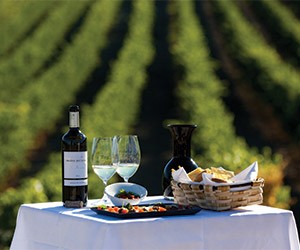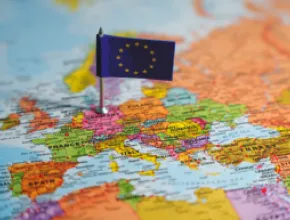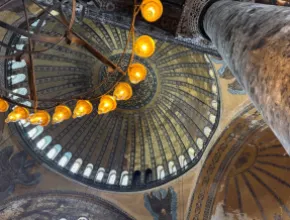Spain has a proverb—“piedra sin agua no aguza en la fragua”—commonly translated as “if you don’t do anything, nothing will come to you.” Where better to apply this wisdom for MICE travelers than in the casual, off-hours networking that happens during outdoor activities?
The fourth most popular country in terms of number of international meetings, according to the International Congress and Convention Association’s 2015 global rankings, blends often-sunny weather with renowned cuisine, richly historic cities and the gorgeous aquatic playground of the Mediterranean.
Spain also boasts a strong infrastructure, including advanced technology and state-of-the-art facilities for business events. Planners can rely on that solid foundation, while adding in breaks that thrill groups with the nation’s traditions and spectacular natural beauty.
Immerse in Iberia
“Uniquely Spanish outdoor activities include folkloric dance lessons and bullfighting lessons, some with a mechanical bull,” explained Patricia Wood Winn, press and public relations manager for the Tourist Office of Spain in Chicago, the North American office specializing in conferences and conventions. “We also have climbing, digging for truffles, various beach excursions and scavenger hunts (gymkhana), which are very educational and fun.
“Visitors can dress up as flamenco dancers and learn some steps—or delve into another folk style, depending on where the group is staying. Or they can get more active with bicycle or Segway tours and 4x4 drives into the mountains, like exploring a banana plantation or Mount Teide [Spain’s highest volcano] from Tenerife,” Winn suggested.
In Basque Country and the Navarra region, MICE travelers can get moving with lessons in jai alai —which means “merry festival.” Pronounced “hai lai,” this sport began over 300 years ago, using church exteriors as part of the three-walled courts. Players catch and hurl a hard rubber ball—made of Brazilian rubber covered in two layers of hand-stitched goat skin—with a cesta, a long, curving wicker scoop strapped to one arm. The ball can reach impressive speeds. In fact, Guinness World Records clocked the quickest at 188mph: the fastest projectile of any moving ball game. Attendees can enjoy experiencing jai alai where the sport originated.
Looking southeast to Catalonia, groups can partake of another distinctively Spanish sport: erecting human towers, better known as castells. A superb teambuilding exercise, this 18th century tradition demands participants both load and unload themselves without any participants slipping. The record remains a 10-level structure, three people wide.
Josie Schneider, owner of the U.S.-based tour company A Path Less Traveled, raved: “We’ve taken a group to the medieval city of Vilafranca del Penedes, outside of Barcelona, the home of the Castellers de Vilafranca. Members assist your group in building a human castle, climbing upon each other. It’s about trust, challenge and fun.”
Time for Tapas
All this activity can work up an appetite. Winn recommended central Spain’s Abadia Retuerta LeDomaine, a luxury hotel at a winery, as it pairs a conference venue for small meetings with a Michelin-starred restaurant.
“Additionally, attendees can do outdoor activities like yoga, falconry, horse riding, helicopter flights, exclusive car rentals and visiting the Hedge Museum,” Winn said.
This stunning open-air collection showcases the massive stone sculptures of contemporary German artist Ulrich Ruckriem.
PageBreak
She also highlighted San Sebastian for a good mix of work, play and indulgence.
“You can do a walking tour of pintxos [Basque small plates] and then visit the market in the old quarter, while using the conference facilities at nearby Kursaal Congress Centre,” she said.
Architect Rafael Moneo designed this singular structure, made of two cubes of translucent glass, to resemble stranded rocks. His goal was to “perpetuate the geography” of this coastal site, “emphasizing the harmony between the natural and the artificial.” He succeeded admirably, winning the European Union Prize for Contemporary Architecture, the prestigious Mies van der Rohe Award.
This striking conference space has hosted everything from a Samsung convention to 2016’s World Cheese Awards. Kursaal sits in San Sebastian, one of the cities with the second highest number of Michelin stars per square meter in the world.
Noemi Rosell, international MICE promotion manager for the Barcelona Convention Bureau, suggested travelers recharge with vineyard walking excursions that include tapas and wine tastings, like Torres Winery or Codorniu, which claims to be the birthplace of cava.
Food and foot traffic also blend courtesy of Context Travel, an international tour company for the “intellectually curious” that offers groups a suite of options. (It also provides expert guest lecturers for events.) In Barcelona, that translates to a three-hour expedition centered around chocolate, which Christopher Columbus introduced there. Legend has it that he landed with a fistful of dried cacao beans after his explorations in the Americas. Europeans then turned a cool, bitter, chili-laced drink into the sumptuous, sugar-laced chocolate we relish today.
Groups can snack their way through Barcelona’s culinary landscape, from liquor-filled bonbons to freshly fried churros, ending with a sweet-packed merinda (the Spanish answer to English afternoon tea).
For those raring to stretch their legs, Context Travel Barcelona covers extensive territory on its beach tour, winding along sandy strands studded with Modernista architecture.
“I also love our day trip from Madrid to Segovia because we walk the Roman aqueduct,” said Paul Bennett, co-founder of Context Travel Barcelona.
This active day trip takes in the skill of these ancient engineers, then admires medieval grain houses, Templar churches and the last great Gothic cathedral built in Europe.
Ready to take strolling to the next level? Madrid is known for its rooftop tours, which open up splendid views of the city from attics, balconies and trendy restaurants secreted under the eaves. One of the city’s best views is from the rooftop, or azotea, at Madrid’s cultural center Circulo de Bellas Artes, which is open for group receptions or events.
For city views, a planned new W Madrid, slated to open in 2019, will offer a rooftop bar.
Tour organizer MadWay goes a step further with lofty treasure hunts, engaging 10 to 100 people. The playful competition awards prizes not just for the fastest team, but also the group that learns the most en route.
Speed Signals
Groups can keep speedsters happy at Circuito del Jarama. Once the home of the Spanish Grand Prix, it now lets visitors race everything from go-karts to Ferraris on the northern outskirts of Madrid. Lounges even accommodate meetings on-site with three of them unleashing panoramic views from the track’s control tower.
GetMyBoat also caters to the need for speed, supplying over 66,000 vessels in 171 countries. Clustered near Palma, its Spanish fleet varies from a simple rib rental to a 50-foot sailboat charter to a fully crewed charter aboard a yacht that sleeps 10.
“A yacht or boat charter can also be a great way for businesses to connect with and court new clients,” said Jess Segraves, GetMyBoat’s marketing and communications manager. “While out on the water, quotidian distractions like social media push notifications and inboxes quiet down for a while.”
The diversion is also a great counterbalance to a conference packed with meetings and networking events.
“After being cooped up all day listening to panels, getting outdoors is a must,” Segraves said. “Conference-goers can meet business contacts more organically on a casual charter with appetizers and drinks, or deepen relationships with vendors and peers over a catered dinner at sea. Plus, proximity to water has been known to boost creativity and help with stress relief.”






